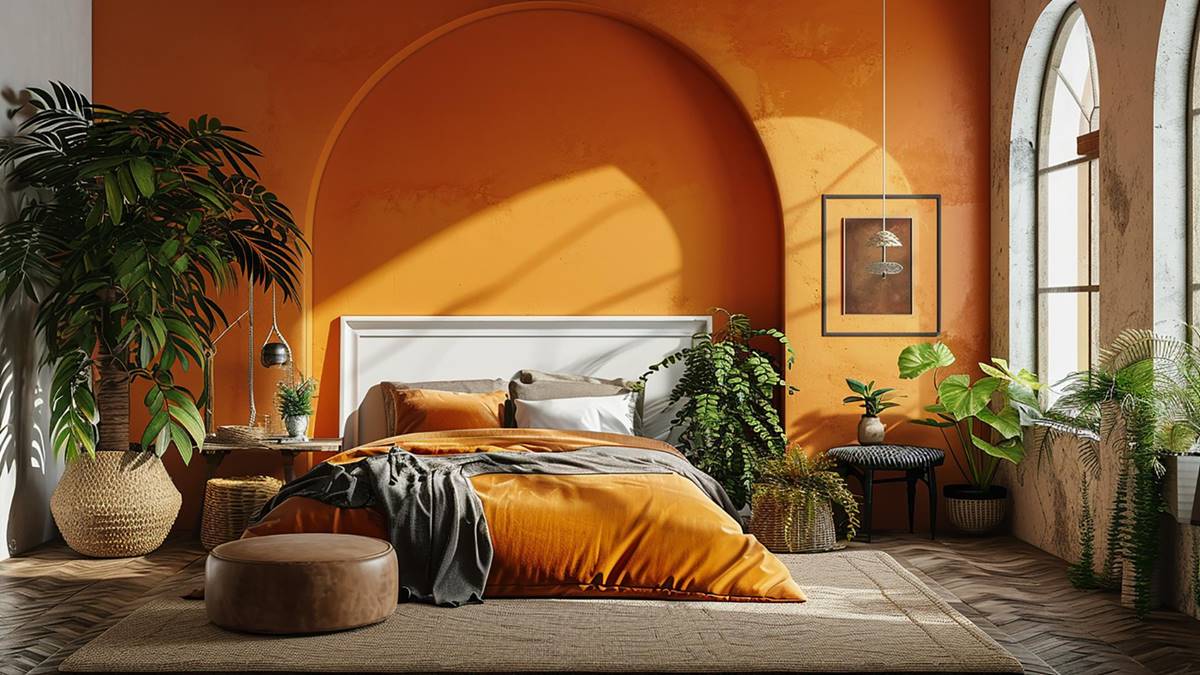The bedroom is one of the most personal spaces in a home—a retreat where we rest, dream, and recharge. Its design influences not only how we sleep but also how we feel. According to vloerbedekking.info, choosing warm colors for the bedroom can transform it into a true sanctuary of comfort and emotional warmth.
Warm colors—such as soft terracotta, muted ochre, warm beige, dusty rose, or earthy taupe—have a natural calming effect. These shades evoke feelings of safety and relaxation, making them ideal for a restful environment. Unlike bold or cool tones that can energize or stimulate, warm hues wrap the room in a gentle atmosphere that promotes sleep and peace of mind.
Psychologically, colors have a strong influence on mood. Warm tones often mimic natural elements like clay, sand, wood, or sunset skies. This organic connection adds a grounded, soothing quality to the space. Especially in colder months or climates, warm shades counteract harsh lighting and cool air, making the bedroom feel more inviting.
Using warm colors doesn’t mean the entire room needs to be painted in dark or intense tones. It’s often more effective to use a balanced palette: perhaps a soft terracotta accent wall, warm wood furniture, beige linens, and golden lighting. Layering various warm shades in textures and textiles—such as cushions, rugs, and curtains—adds visual interest without overwhelming the senses.
Lighting plays a key role in how warm colors are perceived. Natural light enhances soft browns, creams, and peach tones, while dimmable or ambient lighting adds coziness in the evening. Consider warm LED bulbs over cool white ones to maintain the soft atmosphere that supports your color choice.
Pairing warm colors with the right materials further enhances the comforting effect. Wood, rattan, wool, and cotton all contribute to a natural and tactile aesthetic. These elements harmonize with warm tones to create a bedroom that feels both modern and timeless.
It’s also worth noting that warm colors are extremely versatile. They blend well with both minimalist and rustic styles, complement neutral palettes, and even support vibrant accents when used in moderation. Whether your taste leans toward Scandinavian simplicity or boho chic, a warm-toned base can anchor the design beautifully.
Incorporating warm colors into your bedroom design is not just a visual decision—it’s an emotional one. By choosing shades that comfort and calm, you’re creating a space that supports better sleep, less stress, and a deeper sense of well-being.
Ultimately, a bedroom should reflect the feeling you want to experience when you walk into it. With warm colors, that feeling is one of safety, softness, and serenity—a true refuge from the outside world.
Source: vloerbedekking.info – Warme kleuren in de slaapkamer: een toevluchtsoord voor comfort
